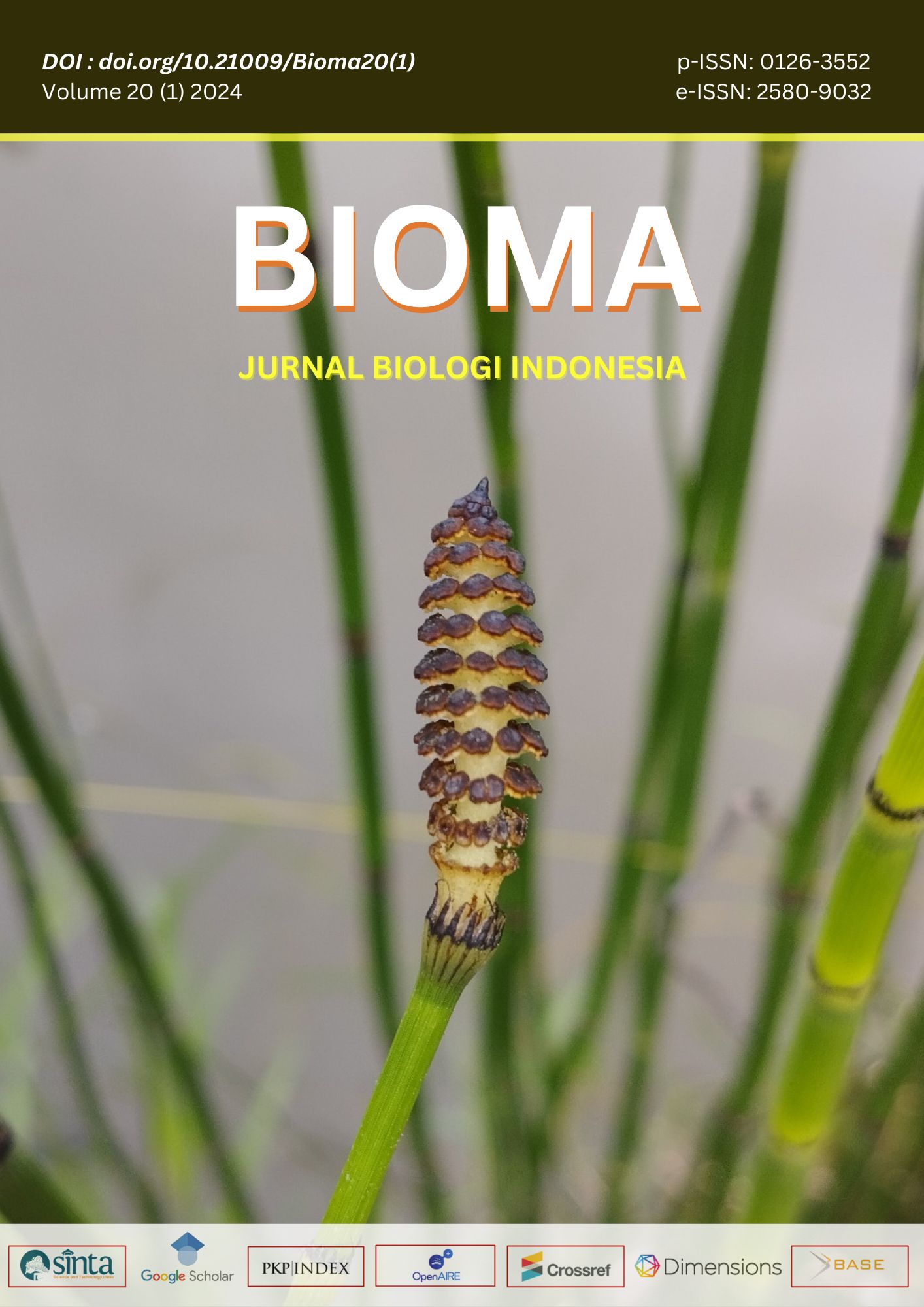The effect of natural noise and conspesific sound density on the prevalence of Leptophryne borbonica Tschudi, 1838 displaying visual signals
DOI:
https://doi.org/10.21009/Bioma20(1).4Abstract
The main mode of communication in Anura is acoustic signals, but environmental noise can hinder effectiveness signal transmission and reception. The adaptation to noise is by visual signals. This study was conducted to determine the density, the type of visual signals detected, and whether there is an influence of environmental noise and conspecific density on the prevalence of Leptophryne borbonica population displaying visual signals. This study was conducted by descriptive method with purposive sampling technique. The data taken was in the form of the number of individuals with visual signals, the number of individuals vocalizing, and the noise of the surrounding environment. The data was processed using the Solomon Coder and analyzed by Poisson regression. 159 individual frogs were found in 40 plots during observations, with the density of individuals in each plot being 3-8 individuals with noise range of 45-74 dB. Noise significantly affected the display of visual signals in a population, while conspecific density did not affect the output of visual signals.
Downloads
Published
How to Cite
Issue
Section
License
Copyright (c) 2024 Bioma

This work is licensed under a Creative Commons Attribution-NonCommercial 4.0 International License.


